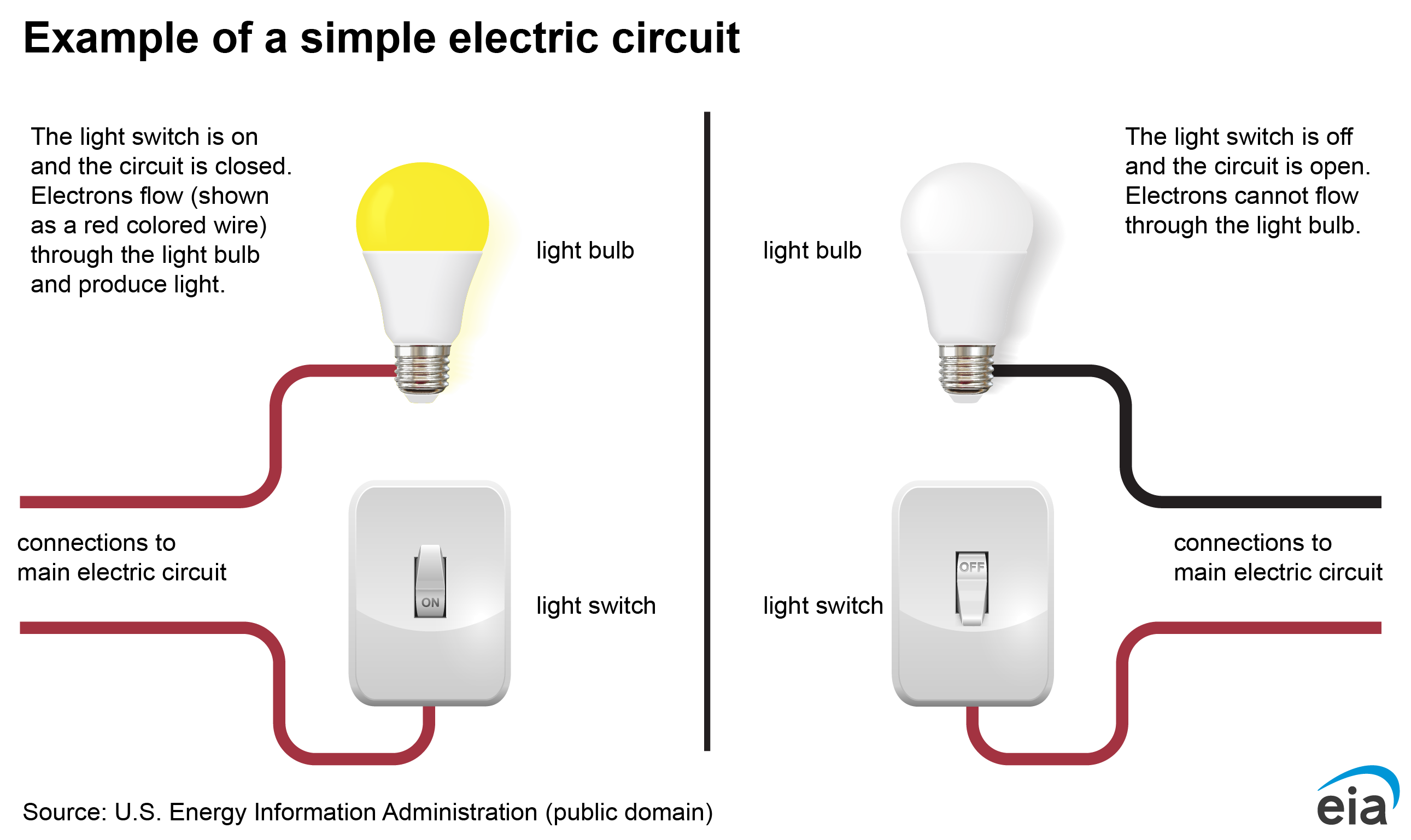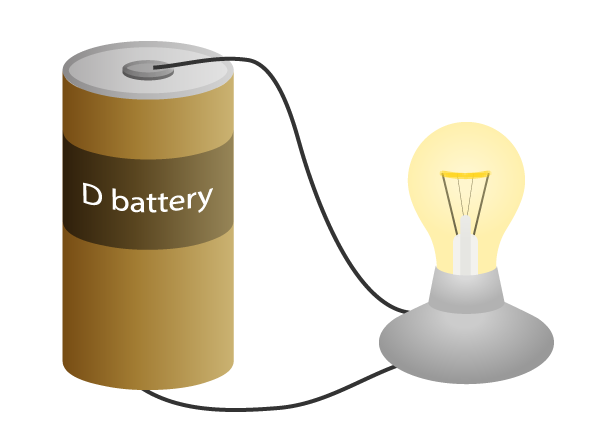Batteries produce electricity
An electrochemical battery produces electricity with two different metals in a chemical substance called an electrolyte. One end of the battery is attached to one of the metals, and the other end is attached to the other metal. A chemical reaction between the metals and the electrolyte frees more electrons in one metal than it does in the other.
The metal that frees more electrons develops a positive charge, and the other metal develops a negative charge. If an electrical conductor, or wire, connects one end of the battery to the other, electrons flow through the wire to balance the electrical charge.
An electrical load is a device that uses electricity to do work or to perform a job. If an electrical load—such as a light bulb—is placed along the wire, the electricity can do work as it flows through the wire and the light bulb. Electrons flow from the negative end of the battery through the wire and the light bulb and back to the positive end of the battery.
Electricity travels in circuits
Electricity must have a complete path, or electrical circuit, before the electrons can move. The switch or on-off button on all electrical devices closes (turns on) or opens (turns off) an electrical circuit in the device. Turning—or switching—off a light opens a circuit and electrons cannot flow through the light. Turning on a light closes a circuit, which allows electricity to flow from one electric wire, through the light bulb, and then through another wire to complete a circuit.

Transformers help to move electricity efficiently over long distances
To solve the problem of sending electricity over long distances, William Stanley developed a device called a transformer. A transformer changes the voltage of electricity in a conductor or power line. High-voltage transmission lines, such as those that hang between tall metal towers, carry electricity over long distances to where it is needed. Higher voltage electricity is more efficient and less expensive for long distance electricity transmission. Lower voltage electricity is safer for use in homes and businesses. Transformers increase (step up) or reduce (step down) voltages as electricity moves from power plants to homes and businesses.
Last updated: December 16, 2022

